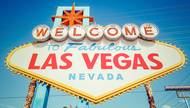There’s textbook history, and then there’s the people’s story, told by those who weren’t necessarily in power but still had something to say. Stories about the 44 black men who worked among 20,000 white men to build Hoover Dam. About Las Vegas’ first African American neighborhood, displaced by the post office now known as the Mob Museum. About boisterous after-hours shows during the Moulin Rouge’s five-month heyday.
Such are the memories collected in Documenting the African-American Experience in Las Vegas, a project by UNLV’s Center for Oral History Research. “Oral history included everyone in history, not just presidents and CEOs,” says Claytee White, director of the center. “Prior to this, we didn’t write history in that way.”
Oral history, or taping and transcribing spoken stories, gained popularity in the 1960s for its inclusive nature, which gelled with the people’s movements of the day. In 1965, the state funded a program at the University of Nevada, Reno, but it wasn’t until 2003 that UNLV got its own. The program has nine other projects, including histories of early Las Vegas, jazz greats, the Jewish community and Downtown neighborhoods.
Documenting the African-American Experience follows the Valley’s black community from its beginning in the early 1900s, when people came to work on the railroads, and touches on everything from the Basic Magnesium Plant and the Nevada Test Site to black entertainers in the ’70s. Las Vegas’ Westside, though not paved and lighted until the 1950s, boasted several establishments, among them the popular Idle Hour nightclub, a fried-chicken restaurant and a school. “Grocery stores were never off-limits, but they couldn’t go to shows on the Strip or restaurants,” White says.
Integration legally took place in the ’60s, but it wasn’t until 1971 that black Las Vegans got the casino jobs they sought. That year, the court issued a consent decree to give blacks 12 percent of all jobs in 18 hotels and across five unions. Previously, African-Americans had only worked behind the scenes. The collection also covers Ruby Duncan and the welfare movement, black showgirls, religion, sports and migration from Arkansas, Louisiana, Chicago and LA. White highlights the stories of Jackie Brantley, Faye Todd and Faye Daniels, the first three black women to achieve mid-level management in the casinos.
“Those interviews helped to show a multifaceted community,” White says. “From these interviews, we then conducted interviews with business owners, people from the faith-based community. ... We got to see the other side—the back side of the house.”






